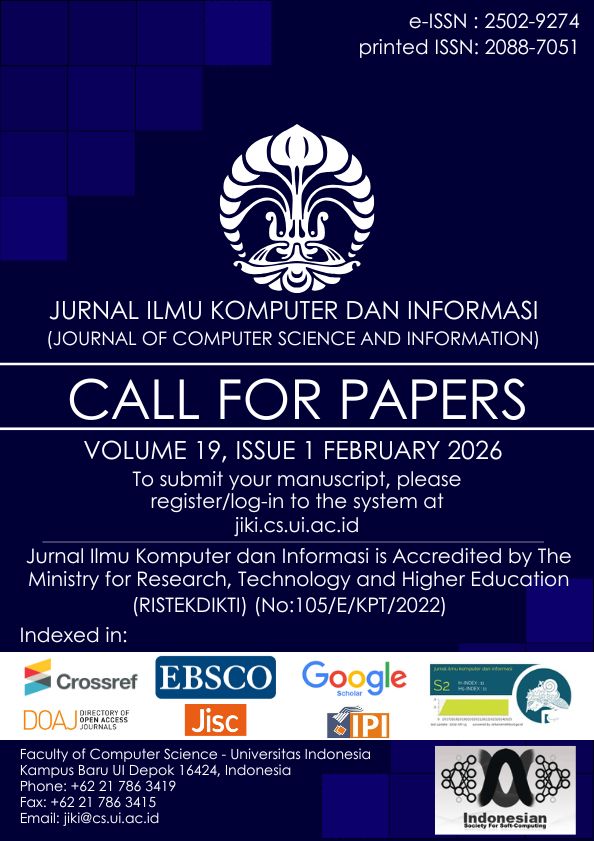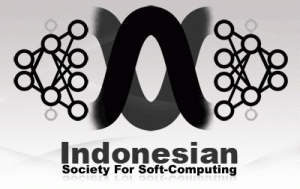CORTICAL BONE SEGMENTATION USING WATERSHED AND REGION MERGING BASED ON STATISTICAL FEATURES
DOI:
https://doi.org/10.21609/jiki.v8i2.305Keywords:
dental panoramic radiographs, cortical bone, segmentation, watershed, region mergingAbstract
Research on biomedical image is a subject that attracted many researchers’ interest. This is because the biomedical image could contain important information to help analyze a disease. One of the existing researches in his field uses dental panoramic radiographs image to detect osteoporosis. The analyzed area is the width of cortical bone. To analyze that area, however, we need to determine the width of the cortical bone. This requires proper segmentation on the dental panoramic radiographs image. This study proposed the integration of watershed and region merging method based on statistical features for cortical bone segmentation on dental panoramic radiographs. Watershed segmentation process was performed using gradient magnitude value from the input image. The watershed image that still has excess segmentation could be solved by region merging based on statistical features. Statistical features used in this study are mean, standard deviation, and variance. The similarity of adjacent regions is measured using weighted Euclidean distance from the statistical feature of the regions. Merging process was executed by incorporating the background regions as many as possible, while keeping the object regions from being merged. The segmentation result has succeeded in forming the contours of the cortical bone. The average value of accuracy is 93.211%, while the average value of sensitivity and specificity is 93.858% and respectively.Downloads
Published
2015-08-27
How to Cite
Hani`ah, M., Aditya, C. S. K., Harto, A., & Arifin, A. Z. (2015). CORTICAL BONE SEGMENTATION USING WATERSHED AND REGION MERGING BASED ON STATISTICAL FEATURES. Jurnal Ilmu Komputer Dan Informasi, 8(2), 76–82. https://doi.org/10.21609/jiki.v8i2.305
Issue
Section
Articles
License
Authors who publish with this journal agree to the following terms:
- Authors retain copyright and grant the journal right of first publication with the work simultaneously licensed under a Creative Commons Attribution License that allows others to share the work with an acknowledgement of the work's authorship and initial publication in this journal.
- Authors are able to enter into separate, additional contractual arrangements for the non-exclusive distribution of the journal's published version of the work (e.g., post it to an institutional repository or publish it in a book), with an acknowledgement of its initial publication in this journal.
- Authors are permitted and encouraged to post their work online (e.g., in institutional repositories or on their website) prior to and during the submission process, as it can lead to productive exchanges, as well as earlier and greater citation of published work (See The Effect of Open Access).











